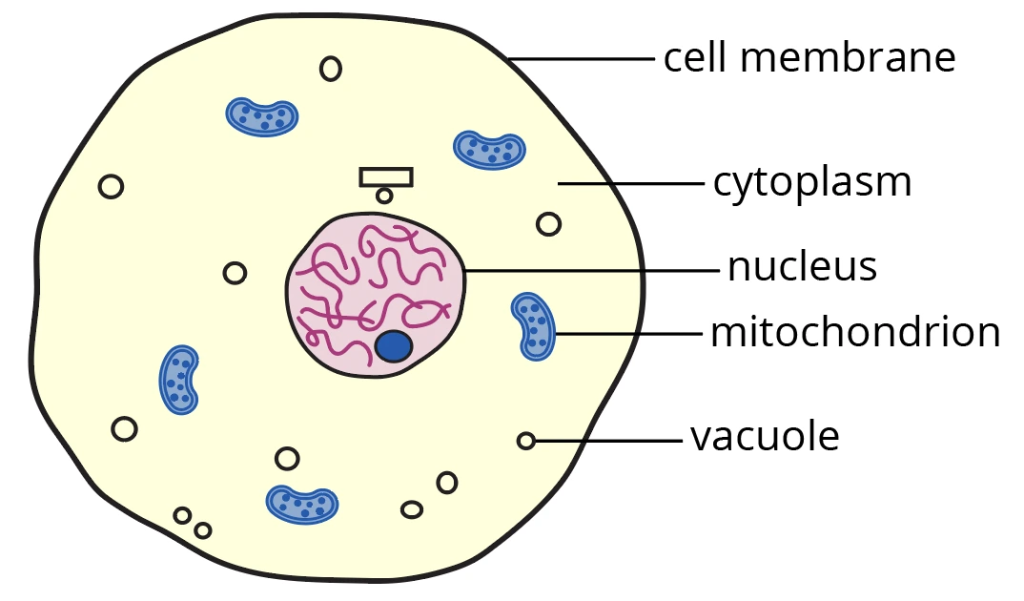The Cell – Basic Unit of Life
📚 Key Concepts
🔹 What is a Cell?
A cell is the smallest structural and functional unit of life. All living organisms are made up of one or more cells.

Cell Theory (Fundamental Principles):
- All living things are made of cells
- Cell is the basic unit of life
- All cells come from pre-existing cells
🔹 Basic Structure of a Cell
Three Main Components:
1. Cell Membrane
- Thin outer boundary of the cell
- Controls entry and exit of materials
- Semi-permeable (selective barrier)
- Present in ALL cells
2. Cytoplasm
- Jelly-like substance inside the cell
- Contains water, proteins, carbohydrates, fats
- Site of most cellular activities
- Fills space between membrane and nucleus
3. Nucleus
- Control center of the cell
- Contains genetic material (DNA)
- Regulates all cellular activities
- Controls growth and reproduction
🔹 Plant vs Animal vs Bacterial Cells

🔹 Specialized Cell Structures
Additional Plant Cell Components:
- Chloroplasts: Green structures containing chlorophyll for photosynthesis
- Vacuole: Large storage compartment for water and nutrients
- Cell Wall: Rigid outer layer providing support and protection
Cell Shape and Function Relationship:
- Muscle cells: Spindle-shaped for contraction
- Nerve cells: Long and branched for message transmission
- Cheek cells: Flat for protective lining
- Root hair cells: Extended for water absorption
🧪 Important Formulas and Concepts
🔸 Cell Size: Usually measured in micrometers (μm)
- 1 micrometer = 0.001 millimeter
- Most cells: 1-100 μm
- Ostrich egg: Largest single cell (130-170 mm diameter)
🔸 Magnification = Image size ÷ Actual size
